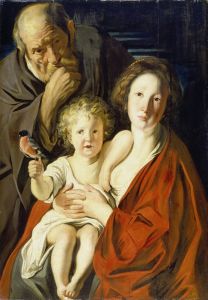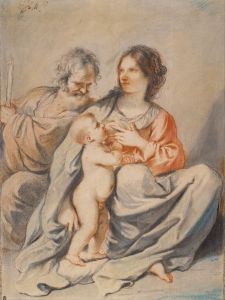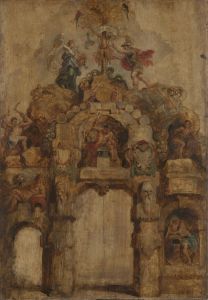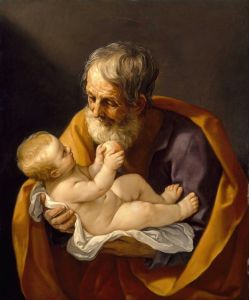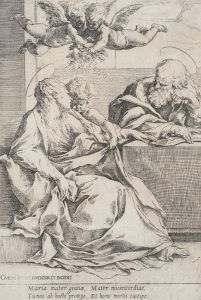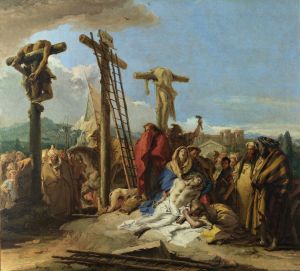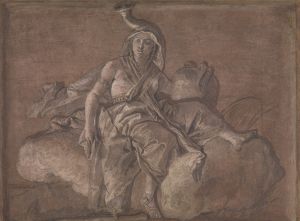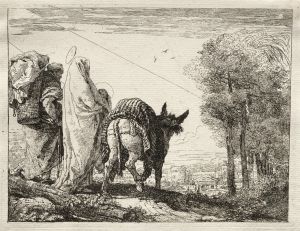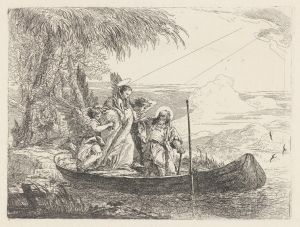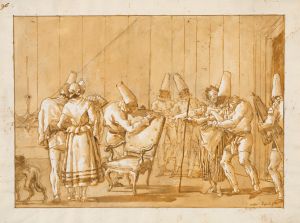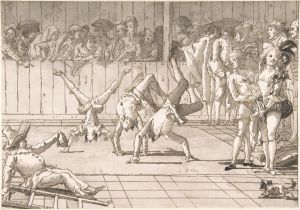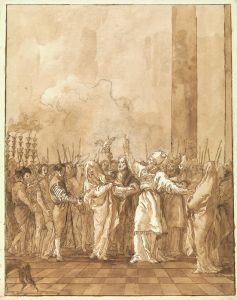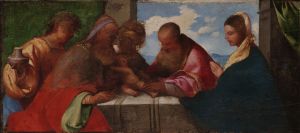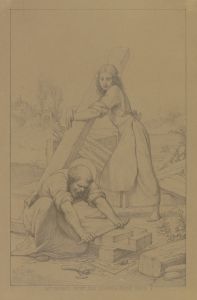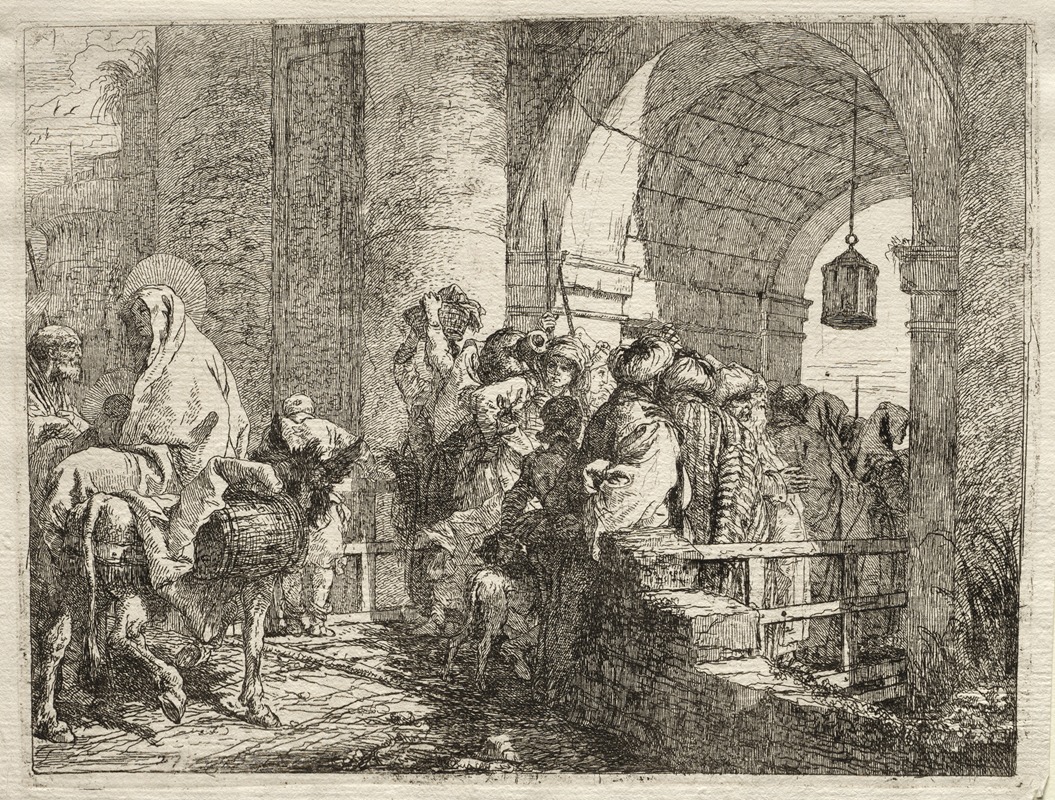
The Holy Family Passing under an Arch
A hand-painted replica of Giovanni Domenico Tiepolo’s masterpiece The Holy Family Passing under an Arch, meticulously crafted by professional artists to capture the true essence of the original. Each piece is created with museum-quality canvas and rare mineral pigments, carefully painted by experienced artists with delicate brushstrokes and rich, layered colors to perfectly recreate the texture of the original artwork. Unlike machine-printed reproductions, this hand-painted version brings the painting to life, infused with the artist’s emotions and skill in every stroke. Whether for personal collection or home decoration, it instantly elevates the artistic atmosphere of any space.
Giovanni Domenico Tiepolo, an Italian painter and printmaker, is known for his contributions to the Rococo movement, following in the footsteps of his father, the renowned artist Giovanni Battista Tiepolo. One of Domenico Tiepolo's notable works is "The Holy Family Passing under an Arch," a painting that exemplifies his skill in composition and narrative storytelling through art.
"The Holy Family Passing under an Arch" depicts a scene from the Christian tradition, focusing on the figures of the Holy Family: the Virgin Mary, Saint Joseph, and the infant Jesus. This artwork is a testament to Tiepolo's ability to blend religious themes with the stylistic elements of the Rococo period, characterized by its lightness, elegance, and use of color.
In this painting, Tiepolo captures a moment of quiet intimacy and movement as the Holy Family is portrayed passing under an architectural arch. The arch serves as a framing device, drawing the viewer's attention to the central figures while also suggesting a sense of journey or transition. This compositional choice is typical of Tiepolo's work, where architecture often plays a significant role in guiding the narrative and enhancing the visual impact of the scene.
Tiepolo's use of color and light in "The Holy Family Passing under an Arch" is particularly noteworthy. The palette is soft and harmonious, with gentle contrasts that highlight the figures and their expressions. The light appears to emanate from within the scene, creating a sense of divine presence and emphasizing the sanctity of the moment. This technique reflects the influence of his father, Giovanni Battista Tiepolo, who was known for his mastery of light and color.
The figures in the painting are rendered with grace and sensitivity. The Virgin Mary is depicted with a serene and contemplative expression, her gaze directed towards the infant Jesus, who is cradled in her arms. Saint Joseph, often portrayed as a protective figure, is shown accompanying them, adding to the narrative of familial unity and devotion. The composition conveys a sense of movement, as if the Holy Family is on a journey, which aligns with the biblical accounts of their travels.
Giovanni Domenico Tiepolo's work is often celebrated for its ability to convey complex narratives with clarity and elegance. "The Holy Family Passing under an Arch" is a fine example of his artistic approach, where religious themes are infused with the stylistic elements of the Rococo period. The painting not only reflects Tiepolo's technical skill but also his ability to evoke emotion and spirituality through art.
While specific details about the commission or the exact date of creation for "The Holy Family Passing under an Arch" may not be extensively documented, the painting remains an important part of Tiepolo's oeuvre. It is representative of his contributions to religious art and his role in continuing the artistic legacy of the Tiepolo family. Through works like this, Giovanni Domenico Tiepolo has secured his place in the history of art as a significant figure of the 18th century, bridging the gap between the grandeur of the Baroque and the elegance of the Rococo.





